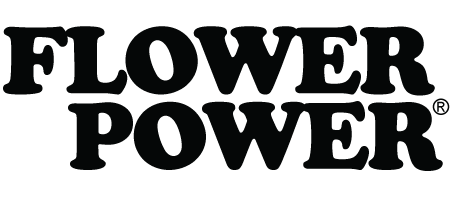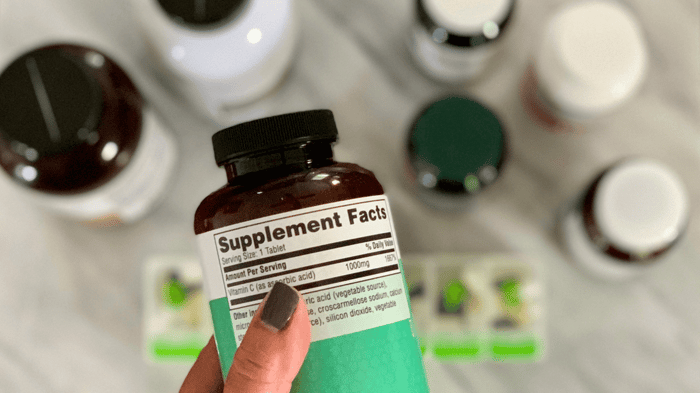Table of Contents
- Why Label Literacy Matters More Than You Think
- Understanding the Supplement Facts Panel
- Analyzing the Ingredients List
- Decoding Measurements and Units
- Evaluating Dosage and Potency
- Certifications, Seals, and Quality Indicators
- Other Essential Label Details
- Turning Label Confusion into Confidence
- FAQs
When it comes to supplements, most of us have been there: standing in front of an aisle filled with bottles, jars, and colorful packaging that all scream promises of energy, balance, or vitality. You pick one up, glance at the label, and suddenly feel like you’re decoding an alien language. The truth is, supplement labels look simple at first glance, but behind those neat boxes and fine print lies a world of essential details about safety, quality, and effectiveness.
Learning how to read a supplement label isn’t just about curiosity—it’s about protecting your health, avoiding marketing traps, and making informed choices that actually support your body. By paying attention to the Supplement Facts panel, ingredient list, dosage, certifications, and even storage instructions, you can uncover the real story behind a product and separate science from hype.
This guide will walk you step by step through every part of a supplement label. By the end, you’ll feel confident not only comparing products but also spotting red flags, asking smarter questions, and aligning your purchases with your personal wellness goals.
Why Label Literacy Matters More Than You Think
Let’s be real: not all supplements are created equal. In fact, studies show that many consumers misinterpret or simply skip over critical details on labels, leading to confusion or even misuse. That’s not just a minor mistake—it could mean taking ineffective doses, ingesting unnecessary fillers, or even exceeding safe nutrient limits.
Supplements can play a meaningful role in supporting wellness, but only if you understand exactly what’s in them. Labels are where transparency lives—or hides. By decoding them, you gain the power to see whether a product truly delivers what it claims, or whether it’s just dressed up in shiny promises.
Think of it this way: the label is your contract with the brand. And like any contract, the fine print matters.
Understanding the Supplement Facts Panel
The Supplement Facts panel is the backbone of every supplement label. It’s structured to give you the hard data: the serving size, how many servings per container, the amount of each ingredient, and how that amount compares to daily nutritional needs.
Serving Size and Servings Per Container
Serving size may seem like a small detail, but it’s the foundation of the entire label. Every number you see—every milligram, microgram, or IU—depends on this. For example, if the serving size says “2 capsules,” all listed nutrient amounts reflect what’s in those two capsules combined.
This matters because different brands define serving sizes differently. One supplement may list a serving as one capsule, while another sets it at three. If you don’t check, you could accidentally underdose or overdose.
Servings per container, meanwhile, tell you how long the product will last if you follow the instructions. A bottle with 60 capsules may last one month if the serving size is two per day, but only 20 days if the serving size is three. This little calculation can save you from unexpected mid-month restocks.
Beyond convenience, serving size ties directly into safety. Taking more than the recommended amount can raise your intake of certain nutrients above safe limits, particularly fat-soluble vitamins (like A, D, E, and K) or minerals such as iron.
Amount Per Serving and Units of Measurement
Right next to serving size, you’ll see the Amount Per Serving column. This tells you exactly how much of each nutrient or ingredient is in that serving. Here, units matter: grams (g), milligrams (mg), micrograms (µg), and sometimes International Units (IU).
If math isn’t your best friend, don’t worry. Think of it as a ladder of scale:
1,000 µg = 1 mg
1,000 mg = 1 g
So, 500 µg of Vitamin B12 isn’t as tiny as it looks—that’s half a milligram, and still a clinically meaningful dose. Understanding conversions prevents underestimating or overestimating potency.
You’ll also notice some ingredients don’t have established Daily Values—particularly herbs, botanicals, or specialty compounds. In these cases, the label will simply list the raw amount, leaving you without a benchmark for comparison.
Percent Daily Value (%DV)
The % Daily Value (%DV) is your quick-glance tool for understanding how a nutrient fits into your daily diet. If Vitamin C is listed at 100% DV, one serving gives you the full recommended daily intake. If it’s 25%, you’ll need to get the rest from food or other supplements.
Keep in mind, though, that %DV is based on general population guidelines. Your personal needs may vary depending on your age, sex, health conditions, or lifestyle. Athletes, for example, often need more of certain nutrients than the average person.
Also, a %DV over 100% isn’t necessarily dangerous—it’s common for water-soluble vitamins like C or B-complex. But for nutrients with strict upper limits, such as iron or vitamin A, consistently exceeding 100% can be risky.
Analyzing the Ingredients List
While the facts panel gives you the numbers, the ingredients list tells you the whole story—both active and inactive components.
Active Ingredients and Their Forms
Active ingredients are the stars of the show: the vitamins, minerals, herbs, or compounds designed to deliver the intended health effect. But the form they come in is just as important as the name itself.
Take calcium, for example. Calcium carbonate and calcium citrate both provide calcium, but citrate is more easily absorbed. The label should specify the form—otherwise, you don’t know what you’re really getting.
Then there are proprietary blends. This is when a brand groups multiple actives into one line, listing only the total weight. For example, “Herbal Blend: 500 mg” might contain three herbs, but you have no idea how much of each is included. This lack of transparency makes it hard to judge potency.
The best labels list each active ingredient separately, with exact amounts. That’s a sign the brand values clarity over marketing shortcuts.
Inactive Ingredients: Fillers, Binders, and Additives
Inactive ingredients may not provide health benefits, but they serve important roles. Fillers like rice flour add bulk. Binders hold tablets together. Coatings make pills easier to swallow. Flavorings or sweeteners may improve taste in powders or chewables.
The issue arises when additives are unnecessary or excessive. Artificial dyes, preservatives, or flavorings can turn a supplement into something you don’t really want in your body. Minimal formulations are usually better, especially if you’re sensitive to certain compounds.
Allergens and Dietary Preferences
The ingredients list is also where allergens reveal themselves. Common culprits include soy, gluten, dairy, shellfish, and nuts. Labels often include a “Contains” statement to make this clearer.
For dietary needs, look for certifications: vegan, vegetarian, non-GMO, or gluten-free. Even the capsule itself matters—gelatin (animal-based) versus cellulose (plant-based). If you’re vegan, you’ll want that cellulose confirmation.
Reading this section carefully ensures that the supplement not only supports your health goals but also respects your body’s unique needs.
Decoding Measurements and Units
Supplement math doesn’t have to be intimidating once you understand the basics.
Micrograms (µg): The tiniest unit, often used for B vitamins or minerals like selenium.
Milligrams (mg): Common for vitamin C, magnesium, and herbal extracts.
Grams (g): Typically used for macronutrient-level amounts like fiber.
And then there’s the tricky one: International Units (IU). Unlike weight-based measurements, IU reflects biological activity. This means 400 IU of Vitamin D isn’t equal in weight to 400 IU of Vitamin A. Labels must be read with this in mind to avoid misunderstandings.
Knowing whether a nutrient is listed in weight or IU helps you compare products more accurately and prevents dosing mistakes.
Evaluating Dosage and Potency
Just because a supplement lists an ingredient doesn’t mean it’s present in an effective dose. This is where label literacy can protect you from disappointment.
Clinical Dosage vs. Marketing Claims
Research-backed dosages are the gold standard. If studies show a certain herb works best at 500 mg daily, but your supplement contains only 50 mg, you’re unlikely to see results.
Unfortunately, many brands rely on the name recognition of popular ingredients while cutting corners on amounts. Always compare the listed dosage against clinical research ranges.
Proprietary Blends and Transparency
Proprietary blends are a red flag for transparency. Without knowing how much of each ingredient is included, you can’t tell if the blend is therapeutic or just window dressing. Reputable brands avoid this practice—or at least disclose amounts for key actives.
When in doubt, prioritize supplements that are clear, specific, and science-backed over those hiding behind marketing tricks.
Certifications, Seals, and Quality Indicators
Beyond the numbers and ingredients, certifications are your shortcut to peace of mind.
Third-Party Testing
Look for seals from organizations like USP Verified, NSF Certified for Sport, or ConsumerLab Approved. These indicate independent testing for purity, potency, and safety—something that goes beyond company promises.
Good Manufacturing Practices (GMP)
A GMP-certified label shows the supplement was produced under strict quality standards, minimizing contamination or dosage inconsistencies. While some companies self-claim GMP, third-party verified GMP holds more weight.
Dietary Certifications
Non-GMO, Gluten-Free, Vegan, and similar seals matter if you have dietary restrictions or ethical preferences. They also demonstrate that the brand respects transparency.
When evaluating a supplement, combining quality seals with clear ingredient labeling gives you the strongest assurance of safety and effectiveness.
Other Essential Label Details
A supplement label is more than just science and certifications—it’s also about accountability and safe usage.
Manufacturer Info: A reputable brand lists its full name, address, and contact details. If you can’t find this, that’s a red flag.
Directions for Use: Clear instructions on how to take the supplement (with or without food, time of day, etc.) prevent misuse.
Safety Warnings: Look for restrictions related to pregnancy, age, or medication interactions. Supplements can be powerful, and these warnings are there for a reason.
Expiration and Storage: Proper storage ensures your supplement maintains potency until the expiration date. For some products like probiotics or fish oil, refrigeration may be required.
These seemingly small details are what separate trustworthy products from questionable ones.
Turning Label Confusion into Confidence
The supplement aisle doesn’t have to feel like a guessing game. With a bit of practice, you can scan a label and quickly understand whether a product is high-quality, transparent, and aligned with your needs. Focus on serving size, dosage, ingredient forms, and certifications, while staying mindful of safety instructions and expiration dates.
When you master the art of reading supplement labels, you reclaim control—making your wellness journey not just safer but smarter.
And if you’re looking for a product that embodies clarity, transparency, and natural effectiveness, Flower Power® has you covered. Learn more about how She Juicy can help you feel naturally confident and comfortable again.
FAQs
What do the percentages on labels mean?
They show how much of the recommended daily intake is covered per serving, based on general nutrition guidelines.
Why is serving size important?
Because all nutrient amounts are based on it. If you assume the label refers to one capsule but it’s actually two, you’ll miscalculate your intake.
What’s the difference between active and inactive ingredients?
Actives provide the intended benefit (like vitamins or herbs), while inactives support structure, flavor, or absorption. Both matter, especially if you have allergies.
Are certifications really necessary?
While not required, they provide reassurance that the product has been independently tested for safety and accuracy—something marketing alone can’t guarantee.










